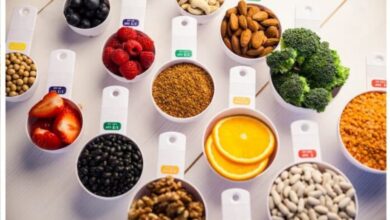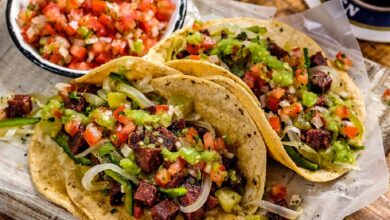The Art of Argentine Facturas: A Delectable Pastry Tradition

Introduction:
Argentina is famous for its rich culinary legacy, and one part of this custom that spellbinds the two local people and vacationers the same is the universe of “facturas.” These superb baked goods are an essential piece of Argentine culture and cooking, frequently delighted in with a cup of mate or a solid coffee. In this article, we’ll plunge profound into the universe of Argentine facturas, investigating their set of experiences, assortments, and the craft of making these flavorful treats.
A Brief History of Facturas
Facturas, the plural type of “factura” in Spanish, are a sort of baked good that follows its foundations back to the impact of European movement in Argentina during the late nineteenth and mid twentieth hundreds of years. The name “factura” itself is gotten from the Spanish word “facture,” meaning receipt or bill. While it could appear to be uncommon to name cakes after monetary records. It mirrors the thought that these sweet treats were initially connected with bistros and organizations that offered them as a component of their administrations.
The variety of European outsiders in Argentina, including Italians, Spaniards, and French, carried with them an extensive variety of baked good making procedures and recipes. After some time, these culinary impacts merged with Argentine fixings and customs, bringing about an exceptional baked good culture that has turned into a fundamental piece of Argentine life.
Varieties of Argentine Facturas
Argentine facturas arrive in a huge range of shapes, flavors, and surfaces, making them a staple of breakfast, merienda (evening tea), or any season of day when a sweet guilty pleasure is wanted. Here are the absolute most famous assortments:
- Medialunas: These bow molded cakes are ostensibly the most notable Argentine factura. Medialunas can be by the same token “de manteca” (made with margarine) or “de grasa” (made with grease). They have a somewhat sweet, delicate inside and a sparkly, sweet hull.
- Vigilantes: Named after the gatekeepers who regularly visited bistros, vigilantes consist of rectangular-molded, flaky puff baked goods finished off with quince glue or a cut of sweet cheddar. These cakes are a magnificent blend of sweet and flavorful.
- Cañoncitos: Cañoncitos are tube shaped baked goods loaded up with dulce de leche or cake cream. They are in many cases moved in sugar or ground coconut for added surface and flavor.
- Palitos de queso: These are meager, crunchy sticks of puff cake covered in sugar and once in a while sprinkled with anise seeds. They are a #1 for dunking into espresso or hot cocoa.
- Tortas: While not as normal as different assortments, tortas are bigger cakes that can be loaded up with jam, dulce de leche, or baked good cream. They are frequently delighted at unique events or as a sweet.
- Facturas de grasa: These are straightforward, round cakes made with fat and normally enhanced with granulated sugar or a sprinkle of syrup. They have a more provincial and vigorous flavor contrasted with spread based facturas.
The Art of Making Facturas
Making genuine Argentine facturas is both a science and a workmanship. The interaction includes a blend of exact strategies and a profound comprehension of the fixings. Here is a worked on rendition of how to make a bunch of medialunas, quite possibly of the most dearest assortment:
Ingredients:
- 500g regular flour
- 10g salt
- 25g new yeast (or 7g dry yeast)
- 50g sugar
- 250ml tepid milk
- 1 egg
- 150g unsalted spread, mellowed
- Sugar for sprinkling
- Dulce de leech (for filling, discretionary)
Instructions:
- Break up the new yeast and sugar in tepid milk. In the case of utilizing dry yeast, adhere to the bundle directions for enactment.
- In a huge bowl, consolidate the flour and salt. Make a well in the middle and pour in the yeast blend. Add the egg.
- Blend the fixings until a batter structures. Ply the batter on a floured surface until it becomes smooth and flexible.
- Carry out the mixture into a huge square shape and spread the relaxed margarine over it equally.
- Overlay the batter in thirds, similar to a letter. Once more, carry it out, and rehash the collapsing system.
- Cool the batter in the fridge for 30 minutes.
- Carry out the batter into an enormous square shape once again. Cut it into triangles.
- Roll every triangle firmly, beginning from the wide end, to make the sickle state of medialunas.
- Put the medialunas on a baking sheet fixed with material paper, passing on space between them to grow.
- Let the medialunas ascend in a warm spot for around 30 minutes, or until they have multiplied in size.
- Preheat the broiler to 180°C (350°F). Sprinkle the medialunas with sugar.
- Heat for 15-20 minutes, or until they become brilliant brown.
- Discretionary: Subsequent to baking, you can fill the medialunas with dulce de leech by making a little entry point in the side and funneling in the filling.
- Permit the medialunas to cool somewhat prior to serving.
Conclusion:
Argentine facturas are something other than baked goods; they are a social and culinary fortune. The assortment, flavor, and history behind these sweet treats make them a fundamental piece of day to day existence in Argentina. Whether delighted in a clamoring bistro in Buenos Aires or newly heated in your own kitchen, facturas offer a sample of Argentine culture that is essentially as different as the actual nation. Thus, the following time you end up desiring a delicious and liberal baked good, consider making a cluster of Argentine facturas and enjoy the magnificent kinds of this dearest custom.




